Research
Search our website
Search our website by entering a keyword or choose a database above to search specifically.
Search
Showing search results 3,171 - 3,180
14,717 results found
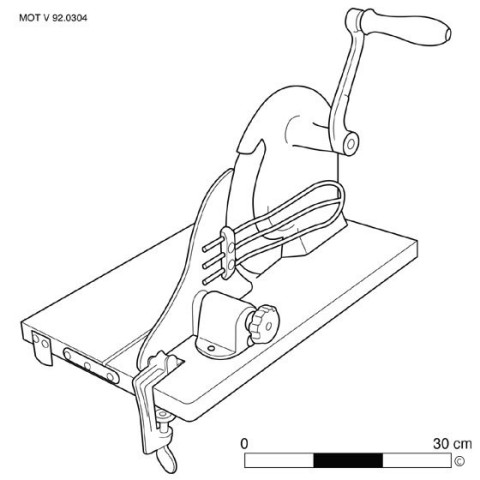
???
This text can only be consulted in Dutch
<https://www.mot.be/resource/Tool/677?lang=nl>
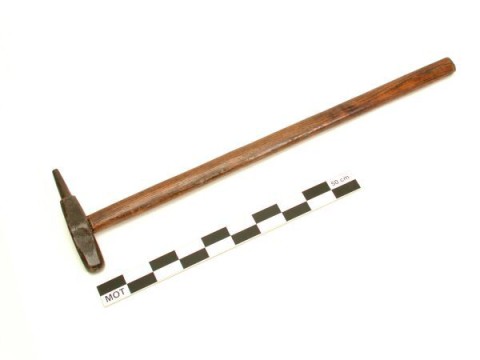
Slaugther hammer
Heavy hammer to stun cattle to be slaughtered, and then kill them with the
neck cut. The stunning can be done with a slaughter mask, a shooting device
or this slaugther hammer (1). It can be a wooden hammer (approx. 5-6 kg)
with a long handle (see sledgehammer). The working part can also be made of
metal and resemble a stone hammer. Or a hammer with a metal head that has a
rod-shaped end on one side, which can be used to punch through the skull to
crush the brain. Another model consists of a hollowed-out pin and a hook at
the other end. The hook would serve to pull the pin out of the skull when
it gets stuck. See also the punch. [MOT] (1) Banned since 1920 (by Royal
Decree of 5 June) in the Netherlands. In France since 1964.
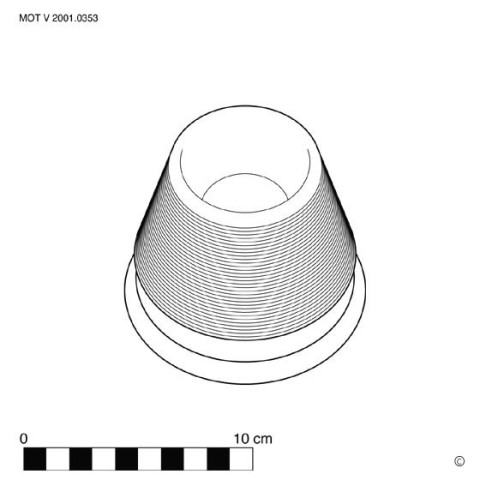
Match striker
Stone pot (approx. 10 cm in diameter; approx. 10 cm high) in the shape of a
truncated cone or sphere (approx. 7 cm in diameter), with a horizontally
ribbed or rough outside along which a match is struck to make it catch fire
(1). At the top of the pot there is a cavity in which the matches are
placed upright. A saucer (approx. 13 cm in diameter) has been placed under
the convex ironing pot to place the burnt matches on. [MOT] (1) That only
works with old matches; today's safety matches will not catch fire if they
are stroked over the ribs.
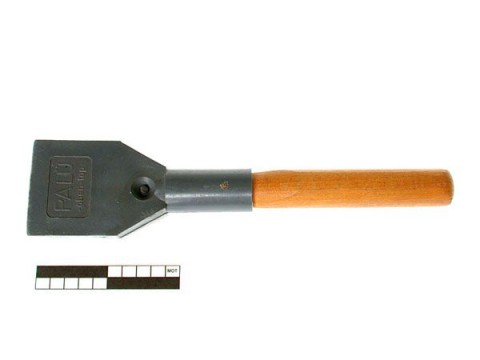
Glazing lever
The glazier can easily lift a large window with a glazing lever. It has a
stem (approx. 20 cm) with a rectangular, thick (approx. 2-3 cm) blade with
one straight and one sloping side attached to it. The tool is slid under
the glass with the sloping side down; once under the glass, the stem is
pushed down and the glass comes up. The glazing lever can be monoxile or
plastic with a wooden handle. [MOT]
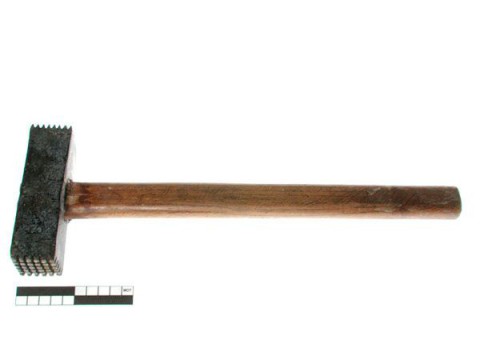
Bush hammer
Hammer with an elongated hammer head (approx. 10-20 cm long, approx. 2-5 cm
wide) made of hardened steel with pyramid-shaped pointed teeth on both
faces and a wooden handle (approx. 30-40 cm), for flattening natural stone.
This type of stone finishing is called bushing. From the 17th century
onwards, the bush hammer was used for hard stone types, never for soft
stone or marble. Because the tips wear out quickly, there are models with
interchangeable heads. The disadvantage of this tool is that it sometimes
causes cracks that make the stone weather faster. See also the bouchard
(chisel). [MOT]
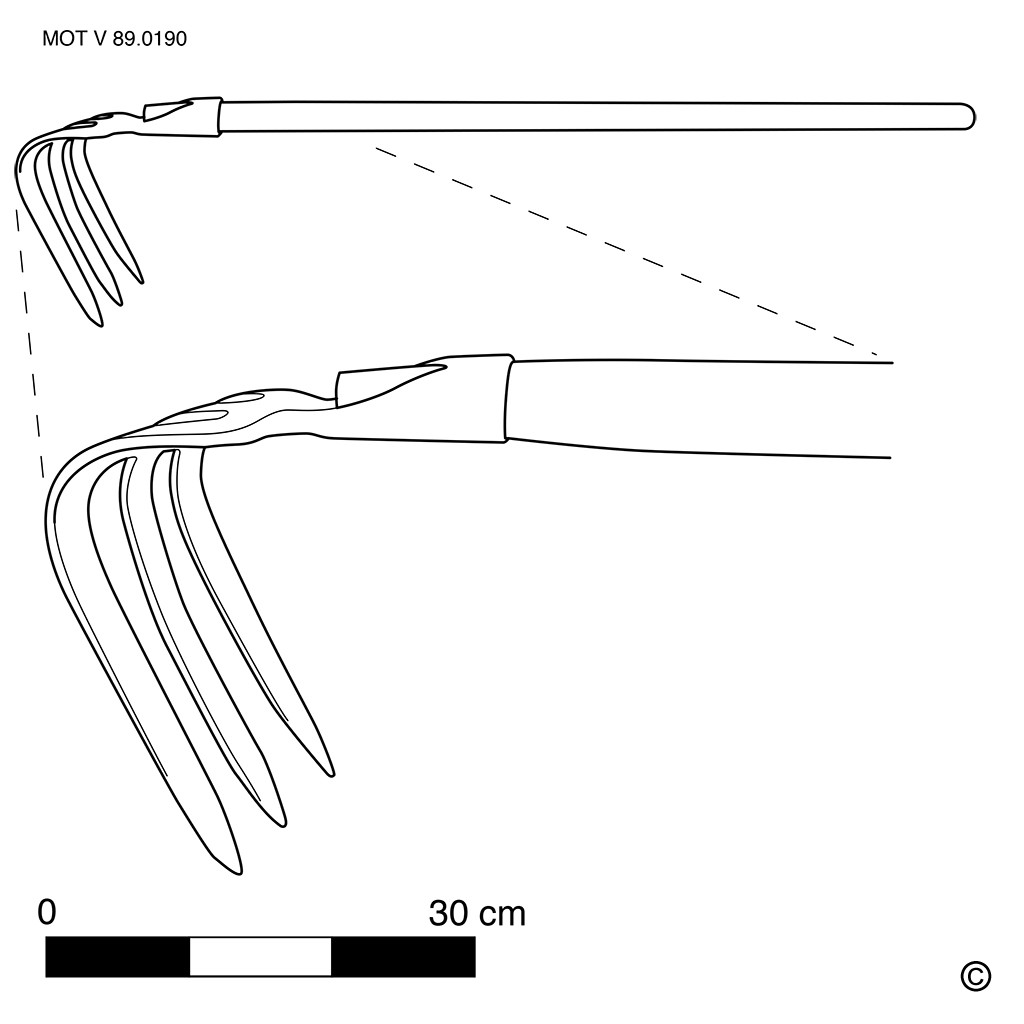
???
Potatoes can be harvested with a garden spade, a hoe, a potato lifting fork
or a potato harvester. The latter has three, sometimes four, wide (approx.
2-3 cm) and flat teeth with pointed ends (approx. 25-30 cm long), which are
slightly attached to a wooden handle (approx. 100-130 cm) ). [MOT]
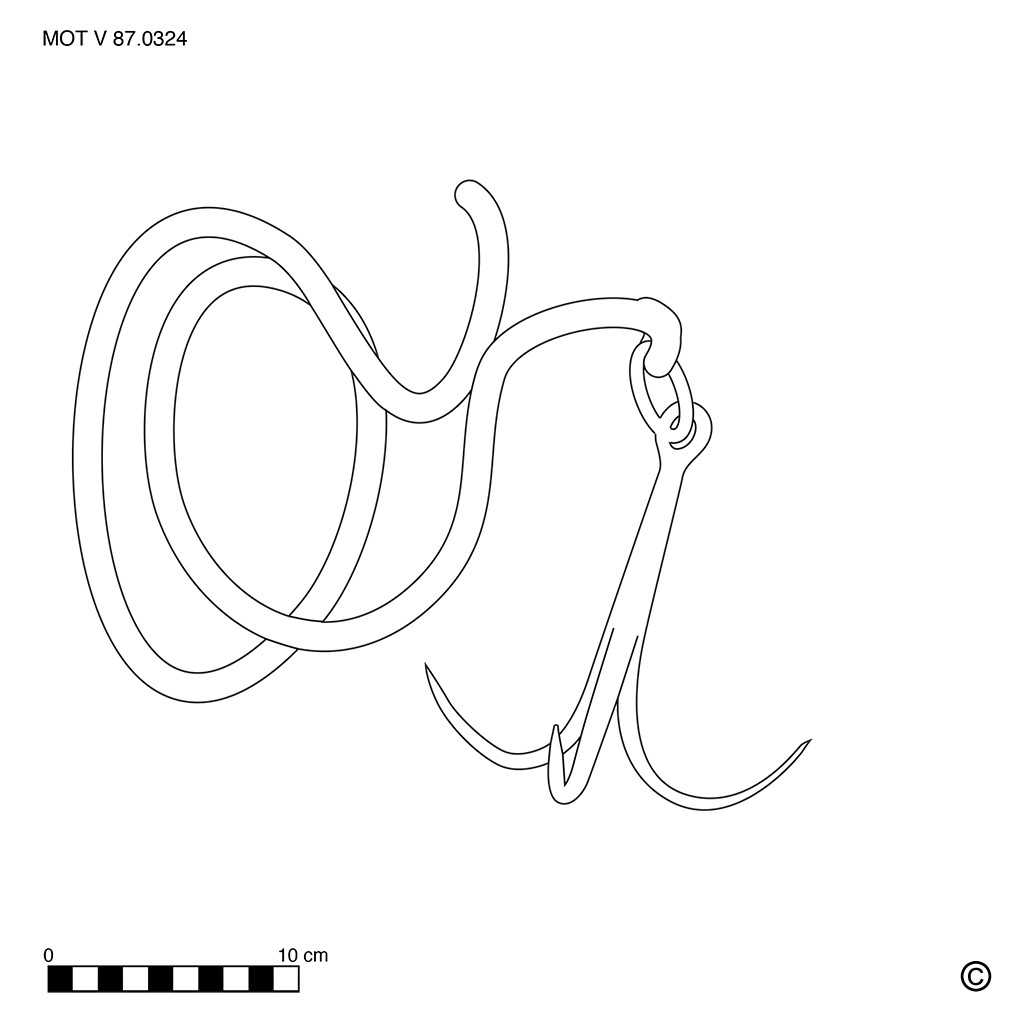
???
This text can only be consulted in Dutch
<https://www.mot.be/resource/Tool/650?lang=nl>
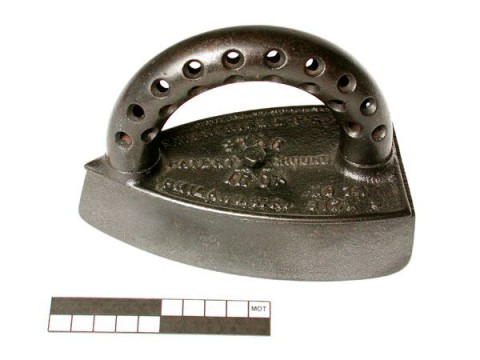
Iron (solid metal)
This text can only be consulted in Dutch
<https://www.mot.be/resource/Tool/646?lang=nl>
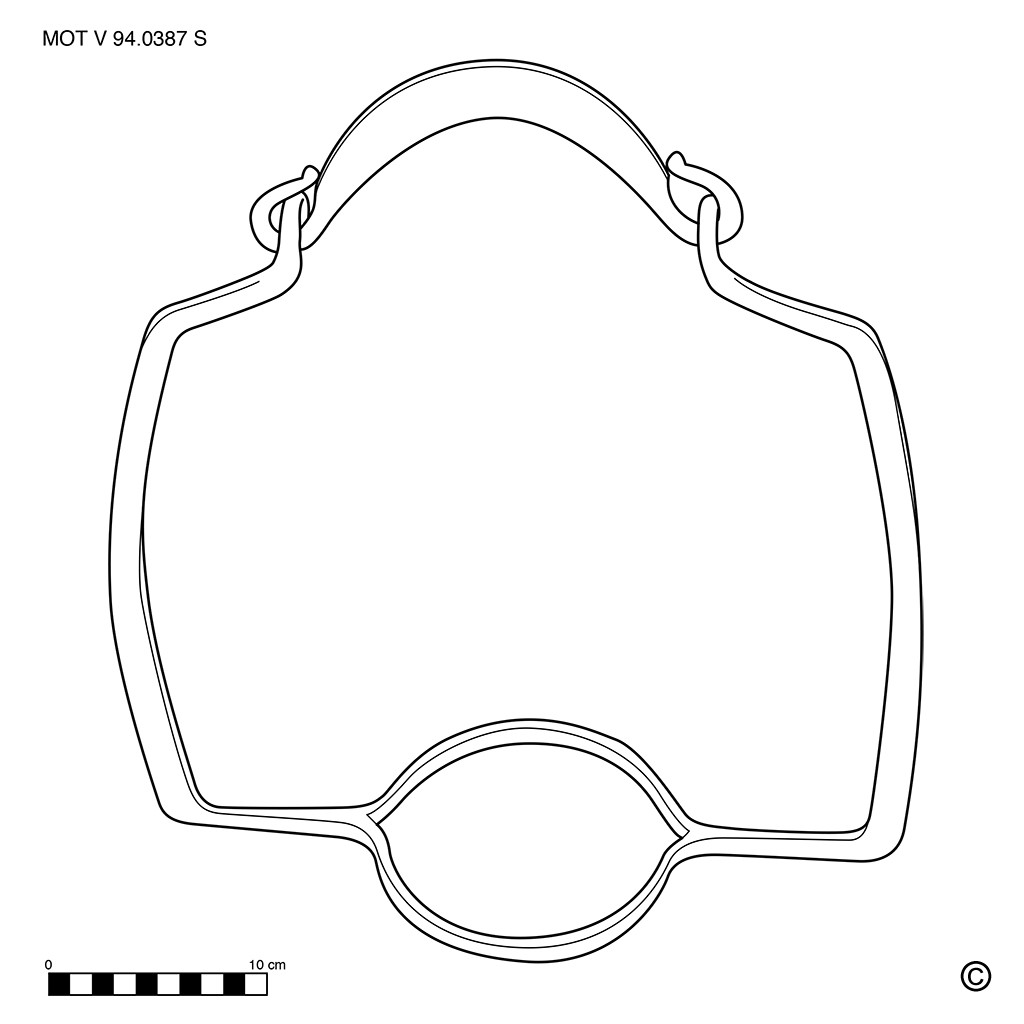
???
This text can only be consulted in Dutch
<https://www.mot.be/resource/Tool/641?lang=nl>
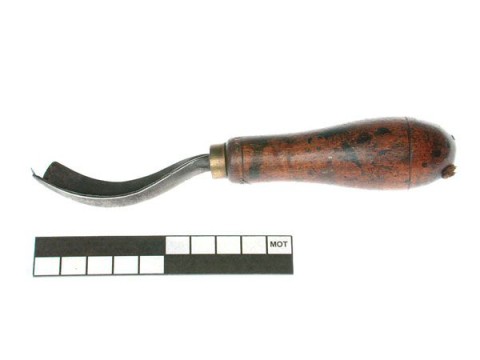
Welt knife
The welt knife is a shoemaker's hand tool that evenly cuts the overhanging
leather on the sole. It has an S-shaped curved top with a cut and a small
protrusion of a few millimeters at the head end, fixed in a wooden handle.
The blade can also have a bent edge on one long side. In some models the
working part is protected with a wooden sheath. See also the welt cutter.
[MOT]
